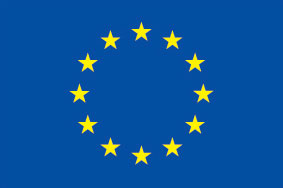The Philippines is one of the only ASEAN markets to record losses in production in recent years when by contrary the consumption of this meat has been rising steadily. While in 2012 the Philippine pork industry produced 3.08 million tonnes of pork, in 2022 it recorded 2.91 million, a 5.5% decrease.
To meet domestic demand, the Philippines has implemented import-friendly policies. In the past year (January–October), pork imports from other markets increased by 103.3% compared to 2023. However, the country is also pursuing longer-term measures aimed at restoring local production capacity, primarily due to persistently rising retail prices, which continue to climb with no signs of stabilisation.
In fresh, liempo or pork belly was at 435 PHP/kg (6.95 EUR) in mid-February, when a year earlier the final price of the cut was 362.03 PHP/kg (5.79 EUR). As for the kasim or pork ham cut, it was at 383.59 PHP/kg (6.14 EUR) and in 2024 at 312 PHP/kg (4.99 EUR). The figures continue to rise, and, despite the end of the holiday season, retail prices have continued on an upward trend.
To understand the competitiveness of imported pork, the final price of the same cuts, but in frozen can be analysed: the liempo is at 312 PHP/kg (4.99 EUR) while the kasim is at 255 PHP/kg (4.08 EUR). This price disparity highlights the role of imports in stabilising supply and offering more affordable options to consumers. The situation is not only difficult for consumers but also for producers, with increasingly narrow profit margins. The cost of production has reached 180 PHP/kg (2.88 EUR), while farmgate prices are between 230 (3.68 EUR) and 250 PHP/kg (4 EUR).
In this regard, the Department of Agriculture is studying, together with other actors in the sector, the possibility of establishing maximums in the final prices of the cuts that reach the market [1]. Another proposal comes from the Development Bank of the Philippines (DBP), a state-owned bank, aiming to establish a Swine 3 credit to help restock and modernise farms. And finally, 2025 is supposed to be the year of vaccination [2]. The Bureau of Animal Industry (BAI) already published at the end of the year the guide for farms to know the protocols and procedures to follow if they want to have access to the vaccine.
However, the Philippines needs to continue importing pork. Depending on the cut, top suppliers are the European Union, Brazil, the United States, and Canada. For Brazil, the top importer since the middle of last year, the Philippines has emerged as a key growth market for Brazilian pork, similar to previous trends seen in China [3]. Brazil offers great stability in volumes, a very competitive price, as well as quality cuts. While producers from the American continent have recently enjoyed a favourable position, the market is now showing a more balanced distribution of opportunities between them and European exporters.
[1] https://www.philstar.com/headlines/2025/02/21/2423086/maximum-farmgate-pork-price-mulled
[2] https://www.da.gov.ph/da-amends-guidelines-for-asf-vaccine-use-to-increase-swine-industry-protection/
[3] https://www.pigprogress.net/market-trends-analysis-the-industrymarkets/the-philippines-the-new-china-for-brazilian-pork-exports/




